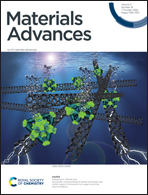Fabricated fractals as unique fingerprints for data and image encryption
Abstract
With advancements in telecommunication technology, data or information transfer has become the backbone of daily transactions. This underlines the importance of transferring data securely by employing techniques of encryption. The purview of Material Science usually is understood to be restricted to materials engineering, property and performance enhancement, reviewing processes of material synthesis, finding or fabricating newer materials, etc. Thus, it primarily serves as a support field. Usually, material science or its concepts are not used for data or information encryption directly. In this work, the use of lab-grown fractals is demonstrated to encrypt information in both text and image formats. By changing the synthesis parameters, a different set of fractals can be fabricated. Furthermore, a library of fabricated fractals (fab-fracs) is proposed that will alter the fractal cover image used for encryption in the real time domain. The fab-fracs give a unique fingerprint characteristic to the library databank proposed in this work. The fab-fracs have a unique growth pattern that cannot be mimicked using mathematical polynomials and when fractal images are picked up randomly in real time, the encryption becomes more robust. The quality of encryption is measured using Peak Signal to Noise Ratio (PSNR) and Structural Similarity Index Measurement (SSIM) values that are 48 dB and greater than 0.995 and are at par with reported encryption techniques. Thus, fab-fracs having their roots in Material Science are proposed as a new-generation tool that can be successfully employed for data encryption.



 Please wait while we load your content...
Please wait while we load your content...